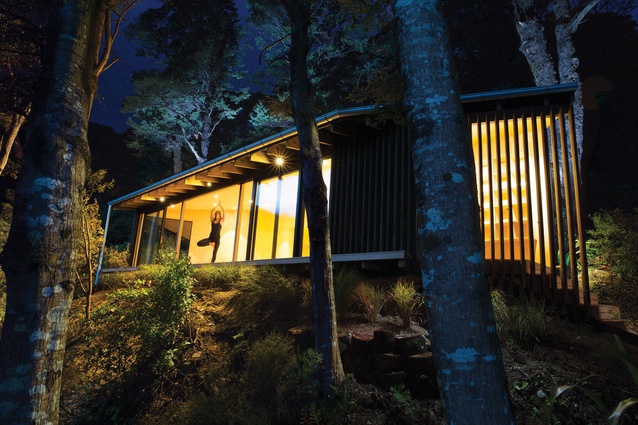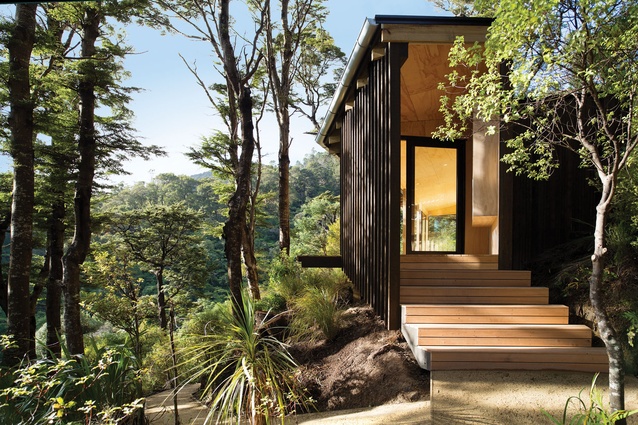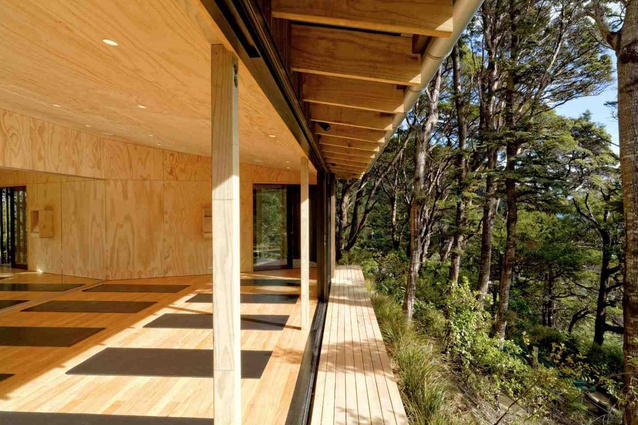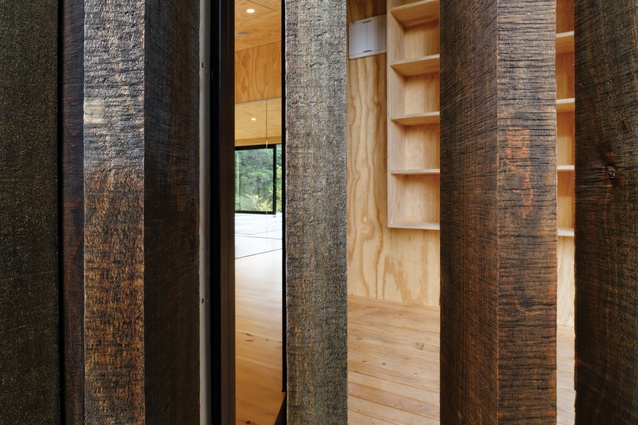Days Bay Yoga Studio
Imagine that you’re having a hard day at work: clients are on your case, a colleague’s in a mood, your phone’s playing up, your partner’s giving you a hard time because you’re always at work and, really, you just want to be horizontal beside the ocean with a good book and a glass of your favourite tipple. But the holidays are not for another six weeks and there’s a good chance your temperament will have well and truly lost the niceties of life by then and been misdirected at entirely the wrong person. However, there’s another solution: the manically busy person’s quick fix, a wee oasis of calm in a sea of shite.
You need to live in or visit Wellington, mind. Take a drive through Petone along The Esplanade, past the silos and around the winding coastal road known as Marine Drive. Here, the choppy sea spits waves over the rocky coastline and leaves pools on the road, houses sit romantically among bush-strewn hills and the pace of life slows back down into holiday mode. When you arrive at Days Bay, a microclimate protected from the worst of Wellington’s infamous winds, breathe in the fresh, salty air deeply, then take a stroll up Moana Road until you reach the Pause Yoga sign. Walk up the meandering path and across someone’s deck, around the children’s paddling pool and up into a native beech forest. Up ahead, a small timber-and-glass pavilion is Paul Rolfe Architects’ latest creation – a 46m2 studio simply dedicated to the several-thousand-year-old exercise/meditation known as yoga (note: you had better book a yoga class first, if you want to view the building, or talk sweetly to the architect for a tour).
Having been a yoga-goer for 15 years or so, I figured that the only way to test this building’s effect, actually, was to take part in a yoga class so I told the architect this and he decided to join me. Then he told his client Cathy Gamba, who runs the studio and she decided to attend the class as well. It was a somewhat unusual scenario to be executing a downward dog yoga position (hands and feet on the floor, head down and bum in the air) among industry colleagues but, in the interests of fully understanding the project, it seemed like the ‘enlightened’ thing to do.
The main entrance is a narrow verandah at the north-western corner of the studio and it’s a portal into another world. The small space is functionally lined with a wall of plywood cubby holes for storing shoes and bags on the rear side of the building while, opposite, vertical battens introduce dappled light into the space. The layout is the result of a number of geometries and site conditions to which the architects wanted to relate. “Firstly, there was the splayed plan of the main body of the studio which was simply designed to maximise the space of the existing flat benching on a steep site and minimise any excavation or tree removal,” states architect Paul Rolfe. Secondly, we wanted to acknowledge the biggest beech tree in the vicinity of the building and shape the building around it in some way and, thirdly, we wanted the front entry to feel like an extension of the existing bush track that you negotiate to reach the studio. To this end, the entry was designed to ascend from the bend in the existing bush track and into a screened transition space, between inside and outside… where class attendees can sign in and leave any gear without disturbing the rest of the class.”
From this portal, you enter through the main door and are immediately transported into a holiday oasis of relaxation. The interior has plywood walls and macrocarpa flooring, apart from the sliding glazed doors which open up into a dramatic landscape view of beech trees and sky, carefully framed by the architect. The roofs of a few neighbouring buildings are apparent here but, once you’ve sat down on a yoga mat, the view is straight out across the treetops. With the doors open, a fresh breeze enters the space, the birds sing and occasionally swoop down, distant ocean sounds arise now and then, and the owner’s black cat stretches out in the sun beside the glazing. All the worries of the world dissipate during the class as you focus on releasing all the tensions from your mind and body. This is, essentially, a typical holiday bach experience right here but for just an hour or two on a workday evening.
With studios like this increasing in number, you can understand why yoga is a growing phenomenen. While statistics are thin on the ground, one survey in 2007 claimed that nine per cent of New Zealand adults had done yoga or pilates in the previous year. A quote from a Harris Interactive poll in a 2003 article in The Wall Street Journal estimates that around 15 million people practised yoga in the United States alone in the previous year. Aside from the relaxation and fitness benefits, yoga has become a way for people to reconnect with themselves and with the surrounding natural world. It is clear that Rolfe’s own practice of yoga and his architectural studio, located just a couple of minutes’ walk down the hill in Days Bay, has consolidated his thinking about what this building could become. It is pure simplicity: a warming and revitalising space to occupy.
But, the build also needed to be economical and, with a steep hill to negotiate when bringing materials on site, steel was avoided in favour of timber. Externally, the discreet pavilion form is clad in vertical shiplap macrocarpa cladding, stained dark to tie in with the dark-coloured corrugated roofing and joinery. “Essentially, I was keen to see how far I could stretch NZ3604 light-timber framing code,” Rolfe says, “and for the most part it was pretty simple, just using sticks of timber for all floor, wall and roof framing. For the front glazed wall, we used laminated timber posts and beams and positioned them inside the line of the glazing, so the unfinished timber formed part of the internal palette of warm timber and ply finishes. The only tricky bit was that the splayed plan meant that using the ply ceiling as a bracing diaphragm was beyond the scope of NZ3604 and we had to have our engineer do some calculations to sign off on it.”
There are no ablution facilities in the studio, although groundwork is currently being undertaken to build a contemporary outhouse, complete with compostable toilet, sited a few metres back from the entrance and overlooking the beech trees to the south.
It seems to me that councils and fitness centres around the country would do well to invest in studios like these on the edges of our city volcanos, rural hillsides and coastal outposts; attendees would become healthier, certainly, whereby reducing public health costs. Also, they would be given access to the power of architecture: that lovely moment of oasis that just about every New Zealand architect is hoping to achieve when they design a beautiful space overlooking a stunning landscape.













